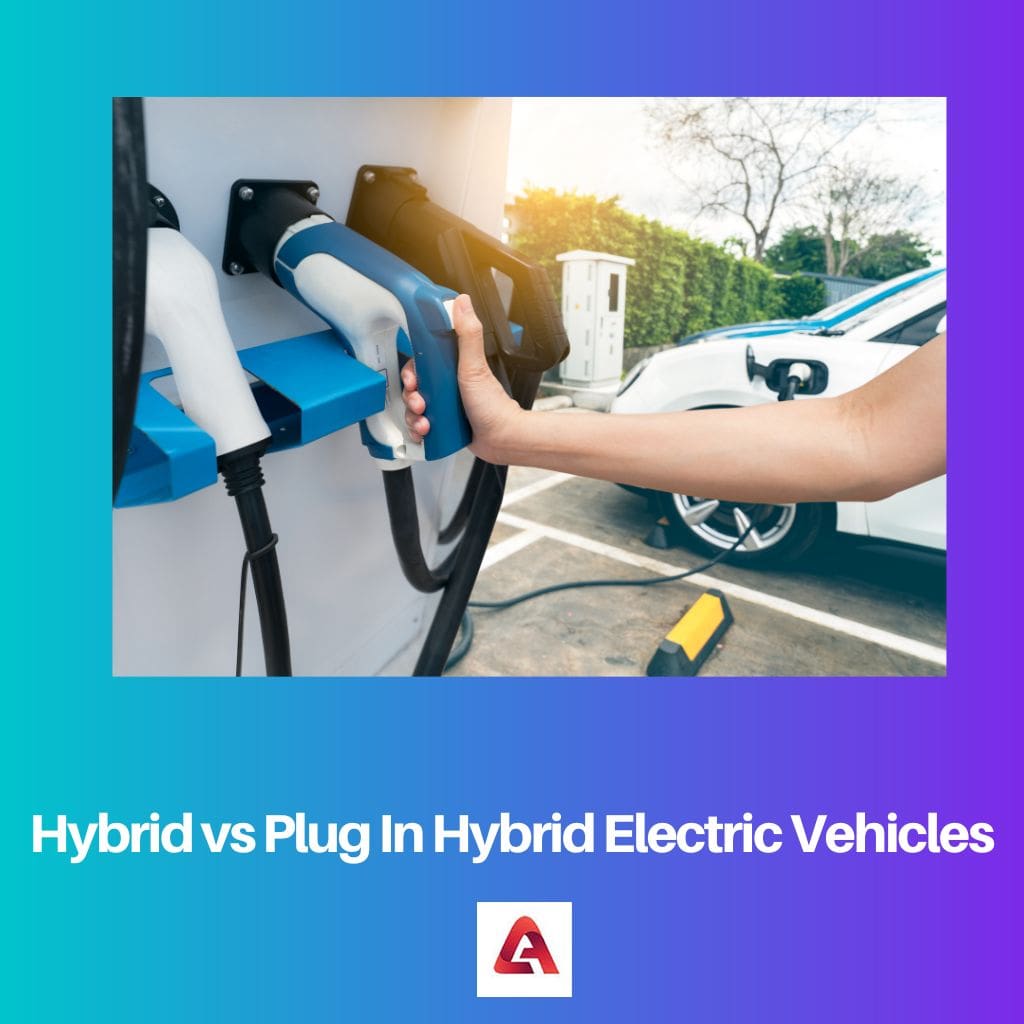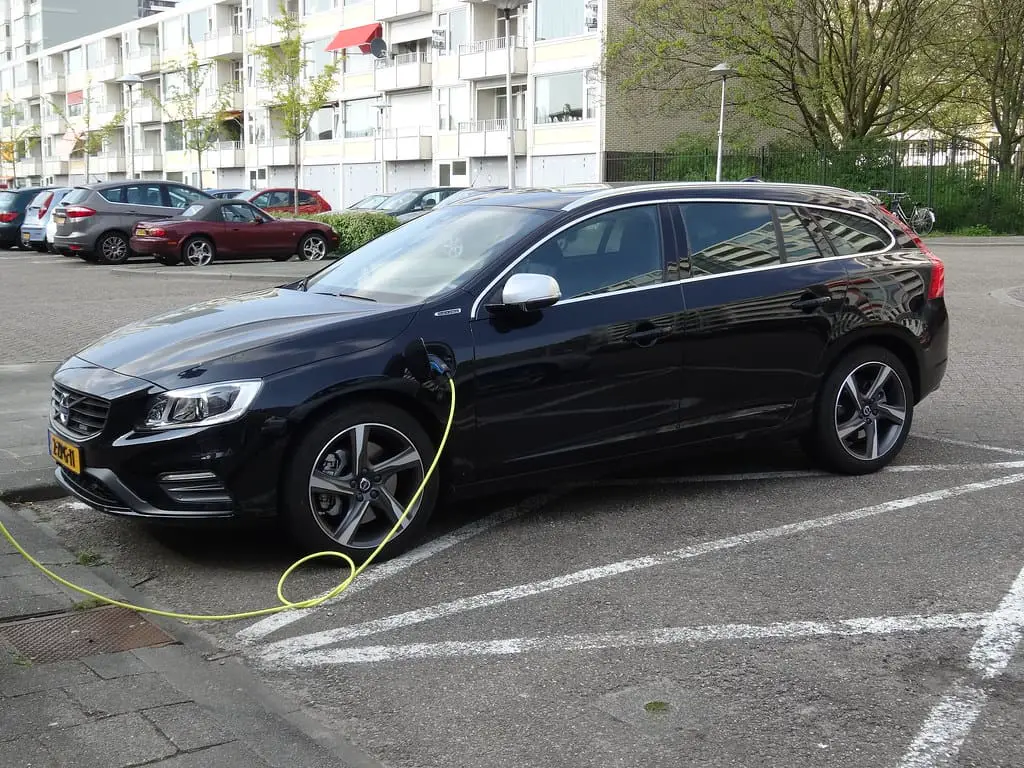A hybrid vehicle can have a maximum combined gas-electric drivetrain power output (GVPD) rated at 5 kilowatts per 100 miles versus 4 kW/100 miles on a traditional engine.
The plug-in hybrids operate using either internal combustion engines or external electric motors, depending on whether they are fully electrified.
Key Takeaways
- Hybrids combine a traditional internal combustion engine with an electric motor, whereas PHEVs have a larger battery capacity and can be charged externally.
- PHEVs can travel farther on electric power alone, reducing fuel consumption and emissions, while hybrids rely more on the combustion engine for extended trips.
- PHEVs have a higher upfront cost due to their larger battery, but this can lead to long-term savings through reduced fuel expenses and potential tax credits.
Hybrid vs Plug In Hybrid Electric Vehicles
Hybrid Electric Vehicles have a single electric engine and cause less pollution due to reduced emissions. They need less maintenance. Plug-In Hybrid Electrical vehicles use traditional double engines and are good for long-distance travelling. They cause pollution and need more maintenance.

Hybrid vehicles use electrical energy to convert the electricity produced from the gasoline and diesel fuel used in your car into chemical reactions needed for heat transfer, which converts water vapour stored in their batteries.
This power can be stored in batteries or generated by additional, stationary battery systems for use as backup energy supply during periods when high loads are encountered near vehicles’ stop points.
Plugged vehicles are fitted with additional batteries that allow the car’s driving range and emissions to increase during regular use or when taken out of storage for long periods.
Plug-ins have made it possible for us with clean electricity generation sources like wind and solar PV systems.
Comparison Table
| Parameters of Comparison | Hybrid Electric Vehicles | Plug In Hybrid Vehicles |
|---|---|---|
| Engine | Electrical | Double Traditional Engine |
| Emissions | Zero | Polluted particles |
| Mechanism | Simple | Little hard |
| Maintenance | Less | More |
| Driving range | Less | More |
| Tax | Exemption | Tac credit |
What are Hybrid Electric Vehicles?
A typical HEVC-10 battery has one lithium-ion cell per 100 square feet of space packed inside about four 5 mm by 4mm pieces (about 1-inch x 2 inches), whereas current auto batteries are 7 cells/square inch – so each EV are capable only two types — 6 miles long-range on charge plus some extra torque at highway speeds before exploding when charging again after 120 minutes.
A hybrid electric vehicle (HEV) could be a style of hybrid vehicle that mixes a traditional combustion engine (ICE) system with an electrical system (hybrid vehicle drivetrain).
Hybrid vehicles have advantages in many areas, including increased fuel efficiency, low emissions, and less weight.
They could also treat all sorts of “regular” gasoline motors without having to run batteries or alternators because they use the ICE electricity instead for braking and acceleration when needed.
But only during high-speed travel where battery life would otherwise dwindle quickly. The turbine drives the motors to supply electricity.
The term “hydrogen fuel cell” was adopted by Tesla Motors Inc. on January 7th, 2015. This company has since been incorporated under NACE designation I-86701, which has hydrogen engines employed primarily within its Powerwall range products.
Too there’s also work associated with adding HEVs to existing plug-in hybrids, like car/plug hybrid combinations already available across many GM divisions, including Cadillac CT.

What are Plug In Hybrid Electric Vehicles?
The capacity of such systems increases as they get larger or wider and become more efficient — that’s the purpose for which PHVs were designed: small sizes allow smaller motors to drive narrower vehicles faster with less fuel required.
High performance means much lower operating costs over their lifetime than gasoline cars because gas engines consume all their energy being used when not needed.
The EV uses either hydrogen or petrol, but it’s not without its benefits too.
It requires just under 30kWh of electricity for fueling and running – much more than the typical domestic car, as it costs about half the cost of owning one! And then some would argue that these vehicles make us all look bad because they’re super expensive like cars were back when we could only afford them once before getting hit with high fuel bills.
If you go down this path, your children will probably consider buying cheaper ones which include their mother carrying around lots of heavier household items, including bags full of everything from clothes to toiletries, even shopping trips dolled up a.
A plug-in hybrid’s all-electric range is designated by PHEV-[miles] or PHEV[kilometres]km, in which the number represents the distance the vehicle can travel on battery power alone.

Main Differences Between Hybrid and Plug In Hybrid Electric Vehicles
- The hybrid vehicle has an electrical engine, but plugging in the hybrid has a traditional double engine.
- Hybrid electricity has zero emissions, but plugs have emissions.
- Hybrid electric has simpler mechanics than Plugin electric vehicles.
- Hybrid electric vehicles need less maintenance compared to plug-in electric vehicles.
- The driving range is more in Plugins compared to Hybrid.
- Hybrid vehicles are exempt from tax, but plug-in hybrid vehicles have a tax credit.




